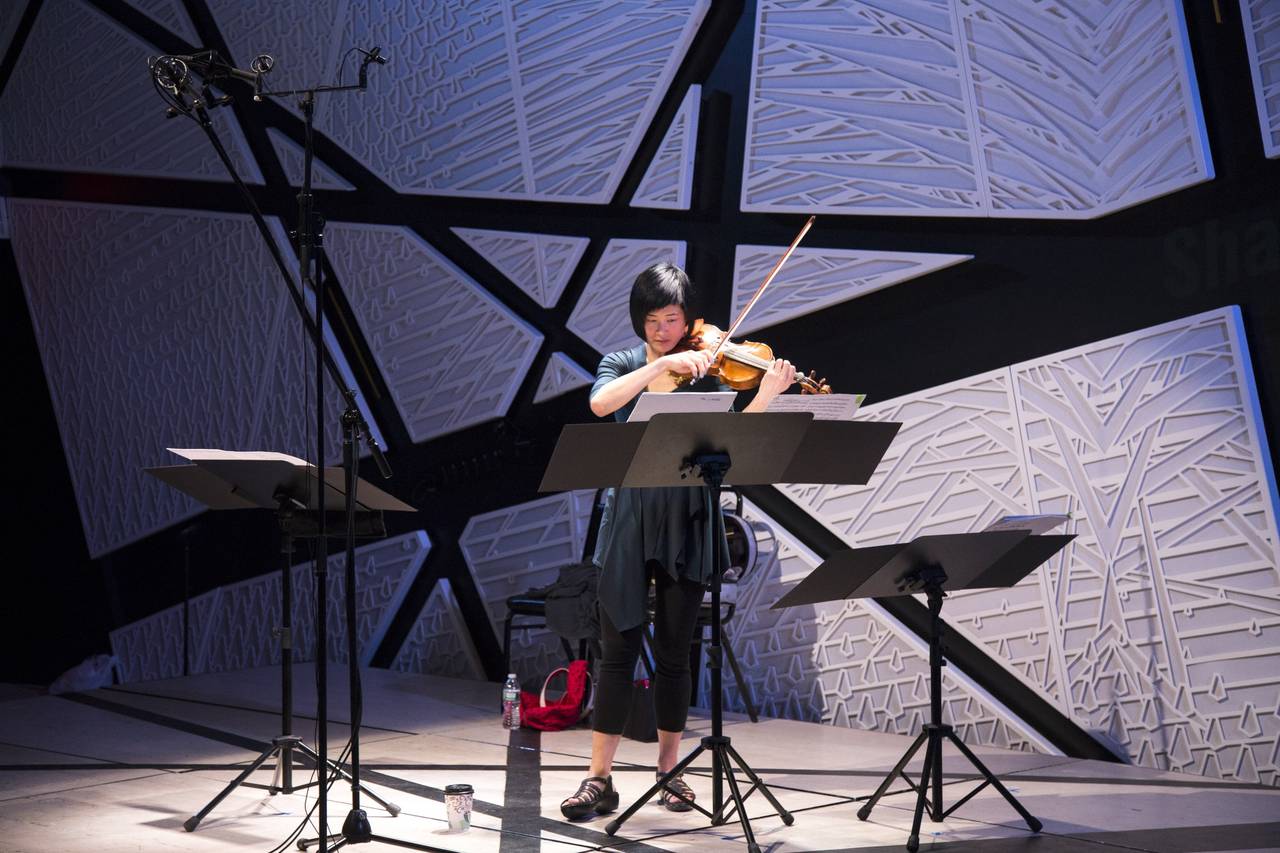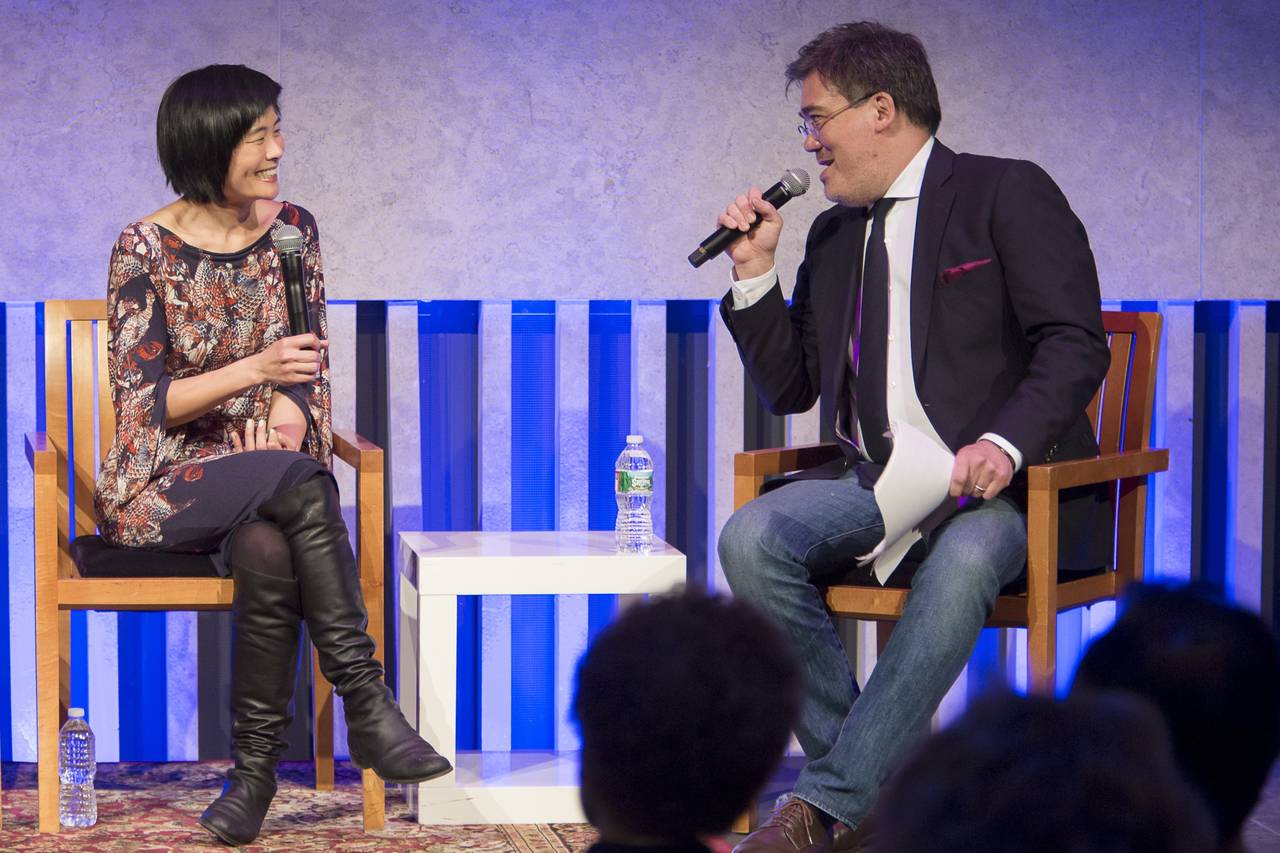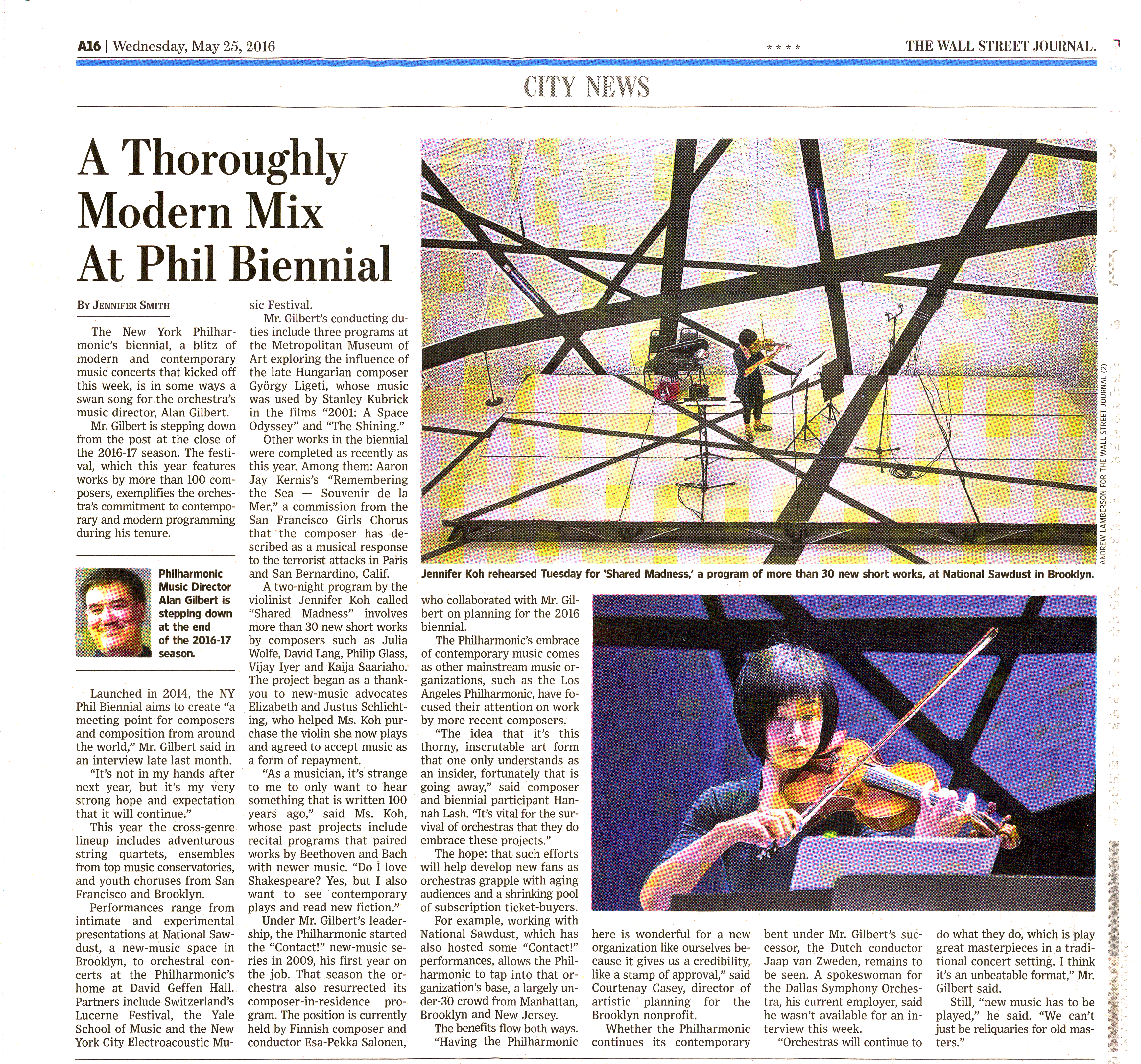The Wall Street Journal
By Jennifer Smith
May 24, 2016
original
link
At New York Phil Biennial, a Thoroughly Modern Mix
The blitz of modern and contemporary music is also a swan song for director Alan Gilbert

Violinist Jenny Koh rehearses before her show at the National Sawdust new-music space in Brooklyn on Tuesday. Photo: Andrew Lamberson for The Wall Street Journal
The New York Philharmonic’s biennial, a blitz of modern and contemporary music concerts that kicked off this week, is in some ways a swan song for the orchestra’s music director, Alan Gilbert.
Mr. Gilbert is stepping down from the post at the close of the 2016-17 season. The festival, which this year features works by more than 100 composers, exemplifies the orchestra’s commitment to contemporary and modern programming during his tenure.
Launched in 2014, the NY Phil Biennial aims to create “a meeting point for composers and composition from around the world,” Mr. Gilbert said in an interview late last month.
“It’s not in my hands after next year, but it’s my very strong hope and expectation that it will continue.”
This year the cross-genre lineup includes adventurous string quartets, ensembles from top music conservatories, and youth choruses from San Francisco and Brooklyn.

Ms. Koh and Alan Gilbert. Photo: Jennifer Taylor
Performances range from intimate and experimental presentations at National Sawdust, a new-music space in Brooklyn, to orchestral concerts at the Philharmonic’s home at David Geffen Hall. Partners include Switzerland’s Lucerne Festival, the Yale School of Music and the New York City Electroacoustic Music Festival.
Mr. Gilbert’s conducting duties include three programs at the Metropolitan Museum of Art exploring the influence of the late Hungarian composer György Ligeti, whose music was used by Stanley Kubrick in the films “2001: A Space Odyssey” and “The Shining.”
Other works in the biennial were completed as recently as this year. Among them: Aaron Jay Kernis’s “Remembering the Sea — Souvenir de la Mer,” a commission from the San Francisco Girls Chorus that the composer has described as a musical response to the terrorist attacks in Paris and San Bernardino, Calif.
A two-night program by the violinist Jennifer Koh called “Shared Madness” involves more than 30 new short works by composers such as Julia Wolfe, David Lang, Philip Glass, Vijay Iyer and Kaija Saariaho. The project began as a thank-you to new-music advocates Elizabeth and Justus Schlichting, who helped Ms. Koh purchase the violin she now plays and agreed to accept music as a form of repayment.
“As a musician, it’s strange to me to only want to hear something that is written 100 years ago,” said Ms. Koh, whose past projects include recital programs that paired works by Beethoven and Bach with newer music. “Do I love Shakespeare? Yes, but I also want to see contemporary plays and read new fiction.”
Under Mr. Gilbert’s leadership, the Philharmonic started the “Contact!” new-music series in 2009, his first year on the job. That season the orchestra also resurrected its composer-in-residence program. The position is currently held by Finnish composer and conductor Esa-Pekka Salonen, who collaborated with Mr. Gilbert on planning for the 2016 biennial.
The Philharmonic’s embrace of contemporary music comes as other mainstream music organizations, such as the Los Angeles Philharmonic, have focused their attention on work by more recent composers.
“The idea that it’s this thorny, inscrutable art form that one only understands as an insider, fortunately that is going away,” said composer and biennial participant Hannah Lash. “It’s vital for the survival of orchestras that they do embrace these projects.”
The hope: that such efforts will help develop new fans as orchestras grapple with aging audiences and a shrinking pool of subscription ticket-buyers.
For example, working with National Sawdust, which has also hosted some “Contact!” performances, allows the Philharmonic to tap into that organization’s base, a largely under-30 crowd from Manhattan, Brooklyn and New Jersey.
The benefits flow both ways.
“Having the Philharmonic here is wonderful for a new organization like ourselves because it gives us a credibility, like a stamp of approval,” said Courtenay Casey, director of artistic planning for the Brooklyn nonprofit.
Whether the Philharmonic continues its contemporary bent under Mr. Gilbert’s successor, the Dutch conductor Jaap van Zweden, remains to be seen. A spokeswoman for the Dallas Symphony Orchestra, his current employer, said he wasn’t available for an interview this week.
“Orchestras will continue to do what they do, which is play great masterpieces in a traditional concert setting. I think it’s an unbeatable format,” Mr. Gilbert said.
Still, “new music has to be played,” he said. “We can’t just be reliquaries for old masters.”
Copyright ©2016 The Wall Street Journal
© Jennifer Koh, All Rights Reserved. Photography by Juergen Frank. Site by ycArt design studio
